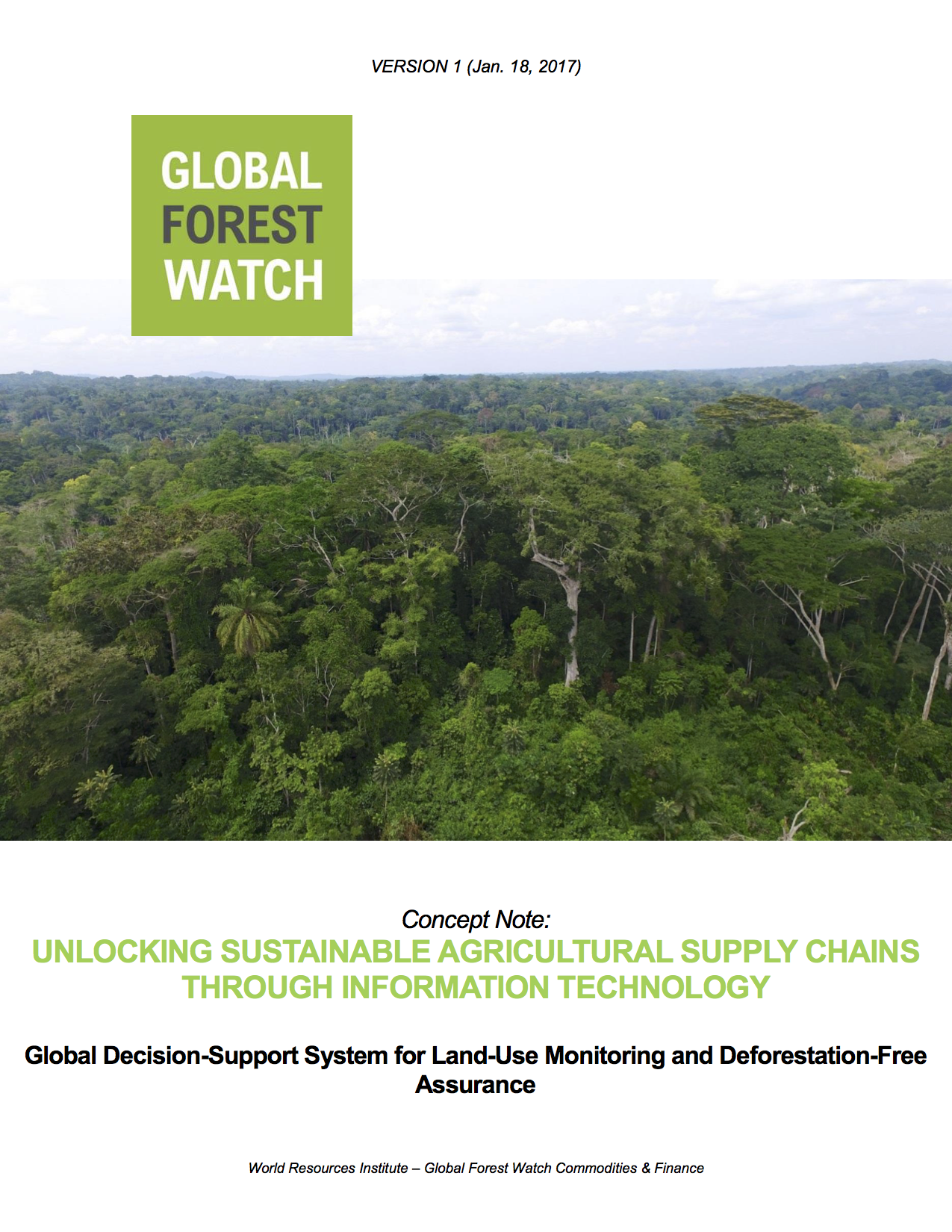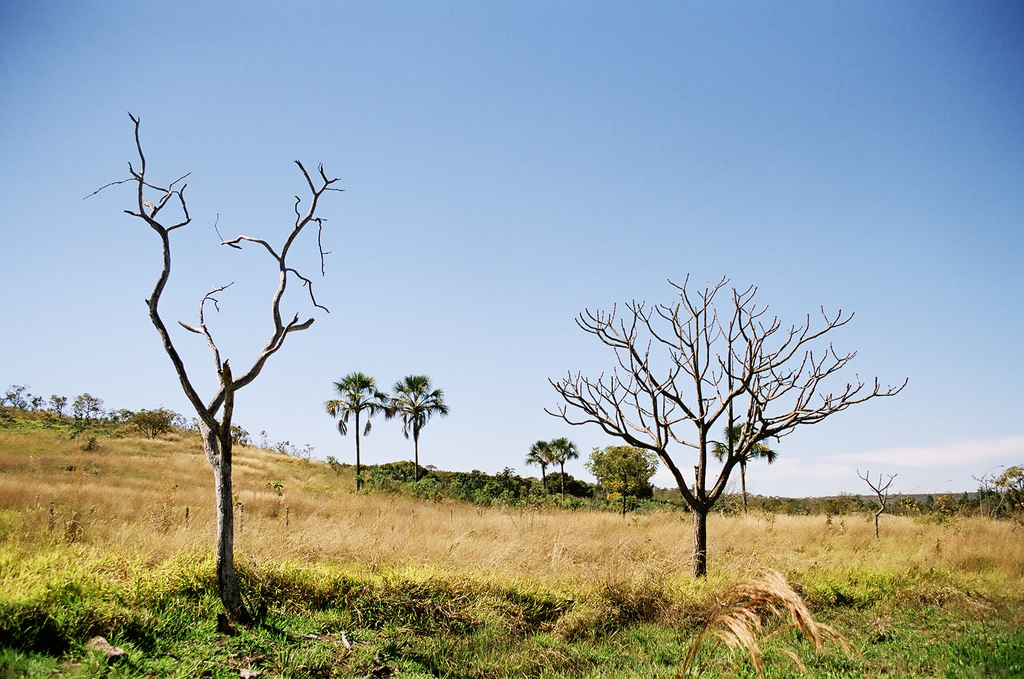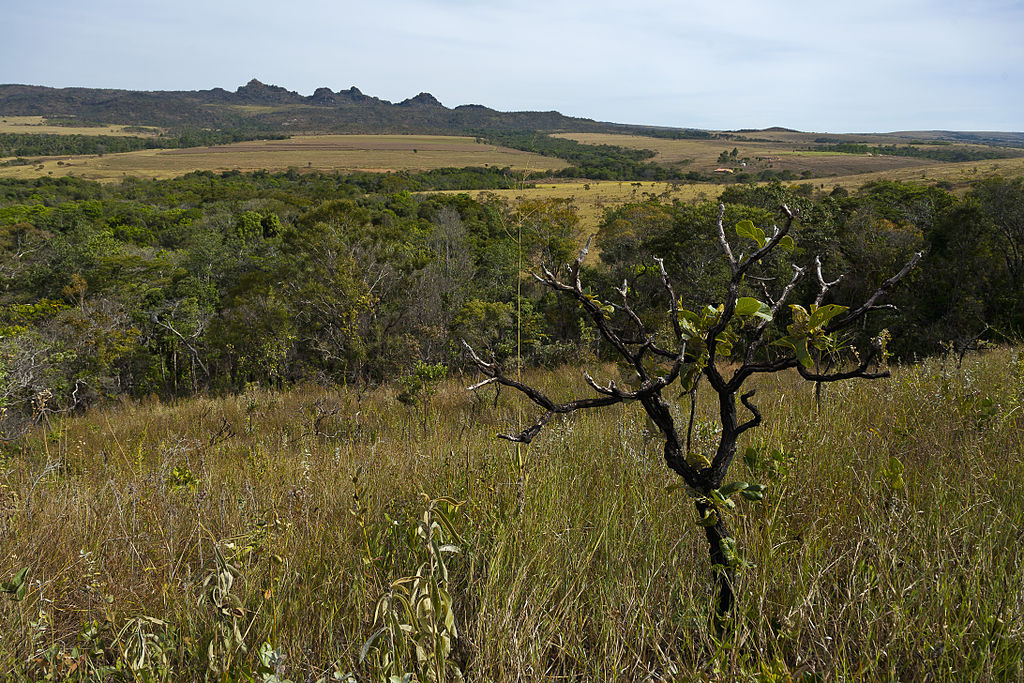- Commodities
For Companies that Cut Protected Forests, There’s Nowhere to Hide

A Kiwcha villager walks in the jungle carrying his chainsaw in front of an area he recently cleared for farming, near the Napo River in Orellana, Ecuador. March 2013. Photo/Tomas Munita
-Tomas Munita
 For products like cacao (above) and palm oil, sustainability is increasingly critical to the corporate bottom line. Bobby Neptune/USAID.
For products like cacao (above) and palm oil, sustainability is increasingly critical to the corporate bottom line. Bobby Neptune/USAID.By Sarah Alix Mann and Octavia Aris Payne Some companies are learning the hard way that sustainability is increasingly critical to the corporate bottom line—and that advanced technologies make unsustainable and illegal practices easier to detect. The Roundtable on Sustainable Palm Oil (RSPO), which is the leading standards body for sustainable palm oil, recently suspended palm oil grower Plantaciones de Pucallpa for clearing primary forest in the Peruvian Amazon. The company can no longer sell their product under the RSPO certified sustainable label. Just a week later, a coalition of over 60 organizationscalled for the removal of United Cacao from the London Stock Exchange Alternative Investment Market (AIM) for destroying forests and violating indigenous rights in Peru’s far-flung Amazon rainforests. It was revealed the two companies are actually connected and funding from United Cacao on AIM goes towards Plantaciones de Pucallpa’s operations. Once upon a time these deforestation activities might have gone unnoticed, but with new forest monitoring systems like Global Forest Watch, which take advantage of high resolution satellite imagery to detect changes in forests in near-real-time, anyone can see within as little as two weeks where trees have disappeared. This information gives journalists, certification bodies, governments and non-governmental organizations hard evidence of unsustainable and potentially illegal practices. It also creates new opportunities to hold those responsible accountable for their negative social and environmental impacts. If companies are forced to face real reputational and financial consequences for deforestation, will we begin to see a change in business as usual?
Disappearing Forests
To maintain its RSPO certification and membership, Plantaciones de Pucallpa is prohibited from clearing primary forests, but data on Global Forest Watch clearly show Intact Forest Landscapes (a close proxy for primary forest) stood on the land in question in 2000, and were cleared between 2011 and 2013. Quick and easy analysis shows nearly 2,360 hectares (5,832 acres) of the Intact Forest is now gone, a conservative estimate that doesn’t include the other 3,915 hectares (9,674 acres) of tree cover lost outside the intact area, bringing the total tree cover loss to about 6,275 hectares (15,506 acres)—an area about the size of the island of Manhattan. How much Tree Cover Loss occurred in this plantation?

One of our previous articles detailed the similar case of United Cacao, which cleared over 2,000 hectares (4,942 acres) of pristine tropical rainforest in the Peruvian Amazon—releasing 660,000 tons of carbon dioxide in the process—while claiming to be a sustainable operation. In their Admission Document to AIM, United Cacao claimed that not only did they not remove any timber from the project site, but there was no high conservation value forest there to begin with – a statement contradicted by satellite evidence. The United Cacao plantation near Iquitos, Peru, as seen by Urthecast satellite imagery.

In light of these investigations, the Peruvian government ordered Plantaciones de Pucallpa and United Cacao to cease operations. That might have been the end of the story in terms of media attention, but in fact, the companies continued to clear forests after they were ordered to stop and did not publicly admit they still stood accused in Peruvian courts. Powerful data like the weekly GLAD (Global Land Analysis and Discovery) alerts showed large patches of tree cover loss since 2015, which the media used to confirm that the companies were continuing to violate government orders. High resolution imagery from Urthecast and recent GLAD Alerts show tree cover loss on United Cacao and Plantaciones de Pucallpa land in the months since they were ordered to stop operations and brought to trial.

Turning Transparency into Accountability
Unfortunately, knowledge of a problem is not always enough to fix it, especially when it comes to the corruption and vested interests that often underlie deforestation. “Legality” is a murky area, since legal frameworks governing forest management often contain loopholes and inconsistencies. In countries and sectors where deforestation is highly profitable, generating revenues for companies and governments alike, political will to address deforestation is often absent. United Cacao, for example, has denied allegations and continues its operations, even demonstrating that the local government is offering them to apply for more land – pointing to a disconnect between national policies and local resource governance. Plantaciones de Pucallpa did much the same, claiming the RSPO’s allegations were completely unfounded, despite satellite evidence. As we enter into a new era of radical transparency for forests, there are signs that the gap between transparency and accountability might be closing:
- The government of Peru did not ignore the evidence against Plantaciones de Pucallpa and United Cacao. Ordering the halt of forest-clearing activities was a critical first step to enable further investigation of these cases. The national forest authority (SERFOR) released a statement saying United Cacao has made false assurances about the legality of their operation, confirming the proper permits were not acquired and deforestation did occur. It remains to be seen whether the Government will follow through with legal action and penalties for these two companies and whether it will be better coordinated with local government enforcement.
- Advocacy organizations are taking advantage of new sources of information like satellite imagery to launch hard-hitting campaigns against companies engaging in unsustainable practices. Truly, a picture of deforestation is worth a thousand words. The United Cacao and Plantaciones de Pucallpa cases made international headlines, creating negative publicity that was seen by potential customers and investors.
- The private sector is also stepping up, driven in part by non-governmental organizations’ campaigns and increased consumer demand for sustainable products. Over 300 consumer goods companies, from Unilever to Walmart, have made zero-deforestation commitments, requiring them to work more closely with suppliers to eliminate deforestation from production of commodities like palm oil, beef, soy, and pulp and paper. Standards bodies such as RSPO are also playing a critical role in this effort, since certification is a key tool for achieving sustainability goals. Consumers can further strengthen incentives for corporations by buying more certified sustainable goods and leaving their non-certified alternatives on the shelf.
Unprecedented access to satellite imagery and data means those who destroy forests for profit can’t hide their activities for long. Governments and markets can work together to make winners of those who protect forests and losers of those who destroy them. Companies that are taking their sustainability commitments seriously will be more likely to find themselves on the winning side.
Explore More Articles

Partnership Launches to Increase Transparency and Traceability Across Supply Chains and Meet Zero-Deforestation Commitments
Read the full concept note. On January 19 at the World Economic Forum in Davos, Switzerland, 20 of the world’s largest commodity producers, traders, manufacturers, consultants and retailers launched a new partnership with research institutions and banks to monitor deforestation and manage sustainability from farm to customer. The partnership, led by the GFW team (see the […]

Technical Blog: Soy Data for Brazil’s Cerrado
By Sarah Sargent and Ryan Sarsfield Taken by Paulo Q Maia (Flickr). License information here. Global Forest Watch (GFW) Commodities recently released new data and analysis for soybean production in Brazil’s Cerrado biome, a mix of forest and savannah rich with biodiversity and carbon. These data show users the spatial extent of soy production and how […]

Companies Can Find Deforestation-Free Soy in Brazil’s Cerrado, Thanks to New Data
By Ryan Sarsfield Cerrado Parque Estadual dos Pirineus by Jonathan Wilkins via Wikimedia. The photo is licensed under the Creative Commons Attribution-Share Alike 3.0 Unported license. Just ten years ago, Brazilian soy’s reputation was at an all-time low for its links to deforestation in the Amazon. The industry, environmental NGOs and the Brazilian government reacted swiftly to establish […]